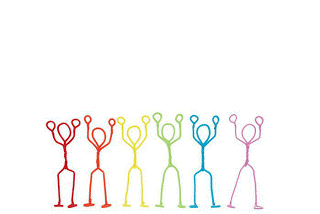ONE OF OUR FIRST PARTNERS HAS UNDERGONE A REBOOT!
GoViral.
Using crowdsourcing to track the spread of viruses.

If you haven’t been to their new site, check it out
– it went live in September 2016! –
and sign up
Join GoViral
Get a $5 Amazon gift card
if you are one of the first 1000 participants
to receive your flu test kit & fill in 4 weekly symptom surveys
Ingrid Spielman is the research associate and data scientist who built GoViral’s new website.
Hope: Why did you think GoViral would benefit from having a new website? 
Ingrid: GoViral, as it stood, had a website interface without any means to interact with users. The new site makes it easy for us to engage with participants. We can remind them to submit kits, and also show them more of the data they input in the form of cool, interactive visualizations.
Hope: Can you describe your typical workday?
Ingrid: While working on the website, I kept a detailed list of project goals. I took a certain amount of time to learn how to accomplish each goal, then went ahead and implemented it. Basically, it broke down to 40% search, 20% asking smart people for help, 40% trying … That adds up right? … If I had known exactly what we needed to do when I started, I bet this project would have happened much more quickly!
Hope: You received your Master’s in Material Science in 2012. What exactly is ‘material science’ and how does it relate to your current work?
Ingrid: It’s a multidisciplinary field where we look at material failure, and discover and engineer materials that have very specific and/or enhanced properties. By looking at how materials degrade over time due to stress, strain failure, or corrosion from sunlight or chemicals, we learn how to improve them. So you have people in material science who are engineering composites that are made up many types of materials – your shoes, for example. Others look at ways to use PTFE (poly tetra fluoro ethylene) – which most people know of as Gore-Tex – in clothing.
Some material scientists look at biomaterials specifically, and solve polymer problems – in which case they’re half chemist! They apply fundamental physics and chemistry to understand the properties of materials and how they change over time. Practical applications are solar cells – how we improve their efficiency – or building computers with smaller, more delicate circuits. They might discover alloys with interesting electronic properties or design lightweight materials that respond better under stress – think of carbon fiber bikes. Perhaps they build materials with interesting reflective properties – which would be considered metamaterials.
Basically, as my professor used to say and probably still does, everything boils down to a materials science question!
With my research-oriented background, GoViral was a natural fit. But I’m so lucky Rumi said I could work on the website. I had to learn most of everything I did for it from scratch!
Hope: Is there another project you’ve worked on that you found to be particularly interesting and/or fulfilling?
Ingrid: Before I decided to focus on data science, I worked in a microbiology lab where we studied how bacteria move and adhere to surfaces. In particular, we studied the bacteria that causes gonorrhea. I used a software called ‘matlab’ to build a user interface so students could easily upload videos of the bacteria, track them, and then find out how fast they moved and how much they were able to pull on the elastic surface they were sitting on. Data like this has implications for how we sterilize surfaces, and also how we treat bacterial infections – which is obviously very important!
Hope: On your LinkedIn page, you mention that you participate in triathlon racing. How did you get involved in this, and what makes it so enjoyable to you?
Ingrid: Cool that you looked! This summer, I did an olympic distance triathlon race at Lake George. I started triathlons while I was in graduate school. I love all three sports – swimming, biking, and running. On weekends, I go out to Coney Island to do laps and to Piermont for cycling trips. The cycling is by far the most fun of the three – if you like exploring and feeling wind in your face!
Hope: Final question: What health-tracking technology do you wish existed?
Ingrid: There are so many wristwatch tools for tracking health related things. I’d like to measure people’s gate (walking) by putting sensors in the soles of their shoes that could help improve both posture and running / walking techniques.
It would be cool to track insulin levels without actual blood samples. It will be great when the cost of sequencing is low enough that people can have in-home devices, and start measuring their gut microflora and skin microflora on a daily basis. If we also keep track of what we eat, this can probably lead to many discoveries in how foods affect our immune system and health.
Additionally, I’d like us to be able to track cortisol levels so we can see how stressed we are at any given point in time.
Hope: I bet lots of people would track that. Thanks, Ingrid!
LIKE US ON FACEBOOK
FOLLOW US ON TWITTER
SUPPORT US WHEN YOU SHOP ON AMAZON
Your data is more powerful
when you’re a part of it!


